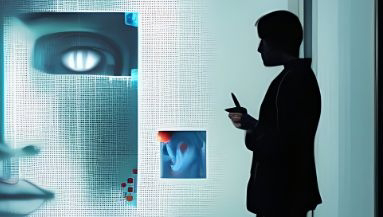Recognizing micro expressions to setboundaries in narcissism
A micro expression is a brief and involuntary facial expression that occurs when a person experiences an emotion but tries to conceal or suppress it. Micro expressions are typically very subtle and can be difficult to detect, lasting for only a fraction of a second. Despite their brevity, micro expressions can reveal a person's true emotions, even if they are trying to hide them.
Micro expressions were first studied by psychologist Paul Ekman, who identified seven basic emotions that could be revealed through facial expressions: happiness, sadness, anger, fear, surprise, disgust, and contempt. Since then, researchers have found that micro expressions can also indicate more complex emotions and even reveal a person's true intentions or thoughts.
Detecting micro expressions can be a useful tool in fields such as law enforcement, psychology, and business, where understanding a person's true emotions or intentions can be crucial. However, it requires specialized training and practice to become skilled at recognizing micro expressions.
Micro expressions are brief, involuntary facial expressions that occur in response to a person's emotions or thoughts. While they can provide clues about a person's emotional state, they are not a foolproof method for identifying narcissism.
That being said, there are certain micro expressions that have been associated with narcissistic behavior, such as:
1. Contempt: This micro expression is characterized by a half-smile and raised chin, and it is often associated with arrogance and a sense of superiority.
2. Smirking: A smirk is a subtle, half-smile that often suggests a sense of satisfaction or superiority. Narcissists may use smirks to dismiss or belittle others.
3. Eye-rolling: Eye-rolling is a common gesture that conveys disapproval or contempt. Narcissists may use eye-rolling to signal their disdain for others.
4. Tight-lipped smile: A tight-lipped smile is a forced smile that does not reach the eyes. It is often used to mask negative emotions, such as anger or contempt.
5. Raised eyebrows: Raised eyebrows can indicate surprise or interest, but they can also be used to signal skepticism or disbelief.
It is important to keep in mind that micro expressions can be subtle and fleeting, and they should not be used as the sole basis for identifying narcissistic behavior. It is always best to look at a person's overall behavior and communication patterns to get a better understanding of their personality traits.
Recognizing micro expressions associated with narcissistic behavior can be helpful in identifying and understanding a narcissist's behavior, which can inform how you interact with them and set boundaries in your relationship.
For example, if you notice that a narcissist frequently uses contemptuous micro expressions, such as smirks or eye-rolling, you may want to consider setting boundaries around how you allow them to speak to you or treat you. This could involve calmly and assertively pointing out their disrespectful behavior and letting them know that it's not acceptable.
When dealing with a narcissist, it's important to remember that setting boundaries can be challenging, and seeking support from a therapist or other trusted professional can be helpful in navigating difficult interactions. By being aware of micro expressions and seeking support, you can take steps to manage your relationship with a narcissist in a healthy and productive way.
However, it's important to keep in mind that setting boundaries with a narcissist can be challenging, as they may not respond well to criticism or perceived challenges to their authority. It's always a good idea to seek support from a therapist or other trusted professional when dealing with a difficult relationship. They can provide guidance on how to set healthy boundaries and navigate challenging interactions with a narcissist.
conclusion, while micro expressions can provide clues about a person's emotional state, they should not be relied upon as the sole basis for identifying narcissistic behavior. However, recognizing micro expressions associated with narcissistic behavior can be helpful in identifying and understanding a narcissist's behavior, which can inform how you interact with them and set boundaries in your relationship.



Comments
Post a Comment